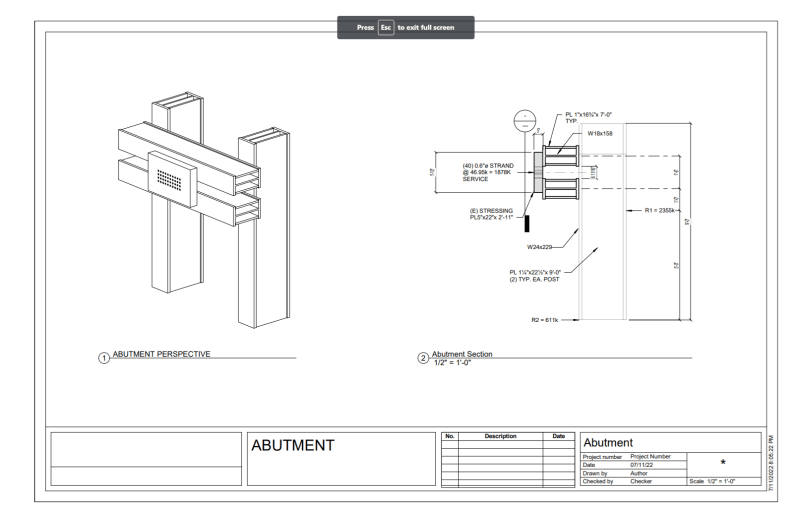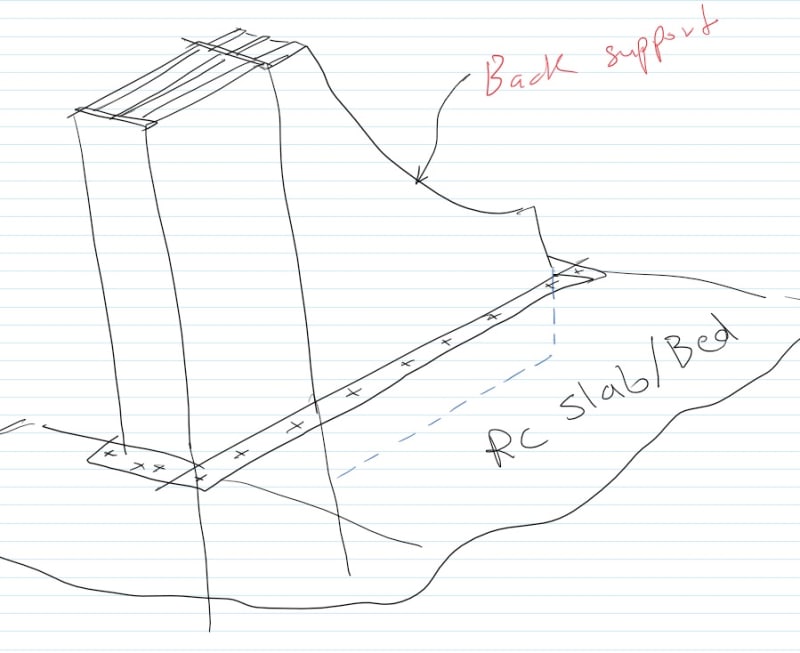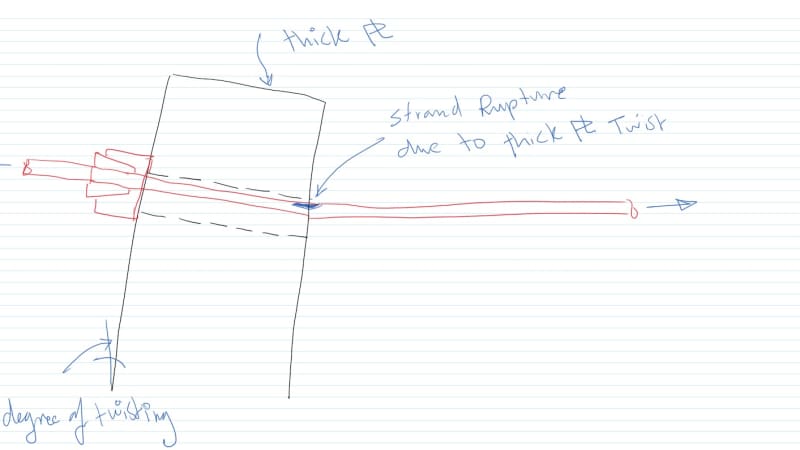Prestressed Guy
Structural
I am reviewing this abutment design that was sent to me for a prestressed girder bed and thought I might get some feed back from the collective.
The STRESSING PL5"x22"x 2'-11" is existing and it is hoped that it can be reused. Given the required loads, it can span about 10". To me, this use would appear to load only the W18 web and one of the 1" lateral plates but not both. I also will produce significant torsion in the built-up W18 which would require web stiffeners at the bearings to prevent lateral distortion at the ends and should probably also have them at the center.
What say you?

The STRESSING PL5"x22"x 2'-11" is existing and it is hoped that it can be reused. Given the required loads, it can span about 10". To me, this use would appear to load only the W18 web and one of the 1" lateral plates but not both. I also will produce significant torsion in the built-up W18 which would require web stiffeners at the bearings to prevent lateral distortion at the ends and should probably also have them at the center.
What say you?



